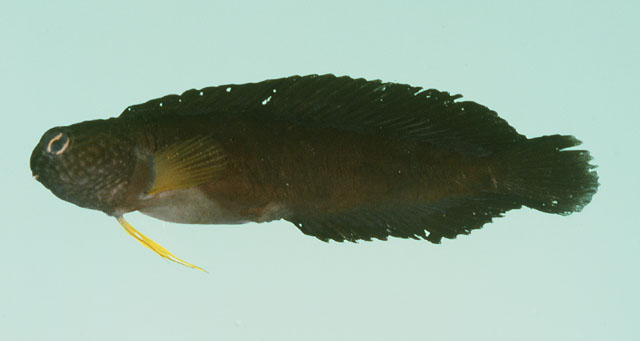| Blenniidae (Combtooth blennies), subfamily: Blenniinae |
| 5.5 cm TL (male/unsexed) |
|
reef-associated; marine; depth range 1 - 10 m |
| Pacific Ocean: Coral Sea (excluding the Great Barrier Reef) to the Tuamoto Islands. |
|
Dorsal spines (total): 8-10; Dorsal soft rays (total): 20-24; Anal spines: 2-2; Anal soft rays: 18-21. Fewer than 50 incisiform teeth in each jaw; large canine on sides of both upper and lower jaw; absence of head cirri; dorsal fin unnotched; dorsal and anal fins fully confluent with caudal fin; coloration dark brown to black, occasionally with faint reticular or barred pattern; numerous small, uneven brown spots on head; yellow paired fins. Dorsal rays modally 2; anal rays modally II, 19; pelvic spine hidden; segmented caudal rays 14, unbranched (Ref. 54980). |
| Oviparous. Eggs are demersal and adhesive (Ref. 205), and are attached to the substrate via a filamentous, adhesive pad or pedestal (Ref. 94114). Larvae are planktonic, often found in shallow, coastal waters (Ref. 94114). |
|
Least Concern (LC); Date assessed: 25 March 2009 Ref. (130435)
|
| harmless |
Source and more info: www.fishbase.org. For personal, classroom, and other internal use only. Not for publication.
